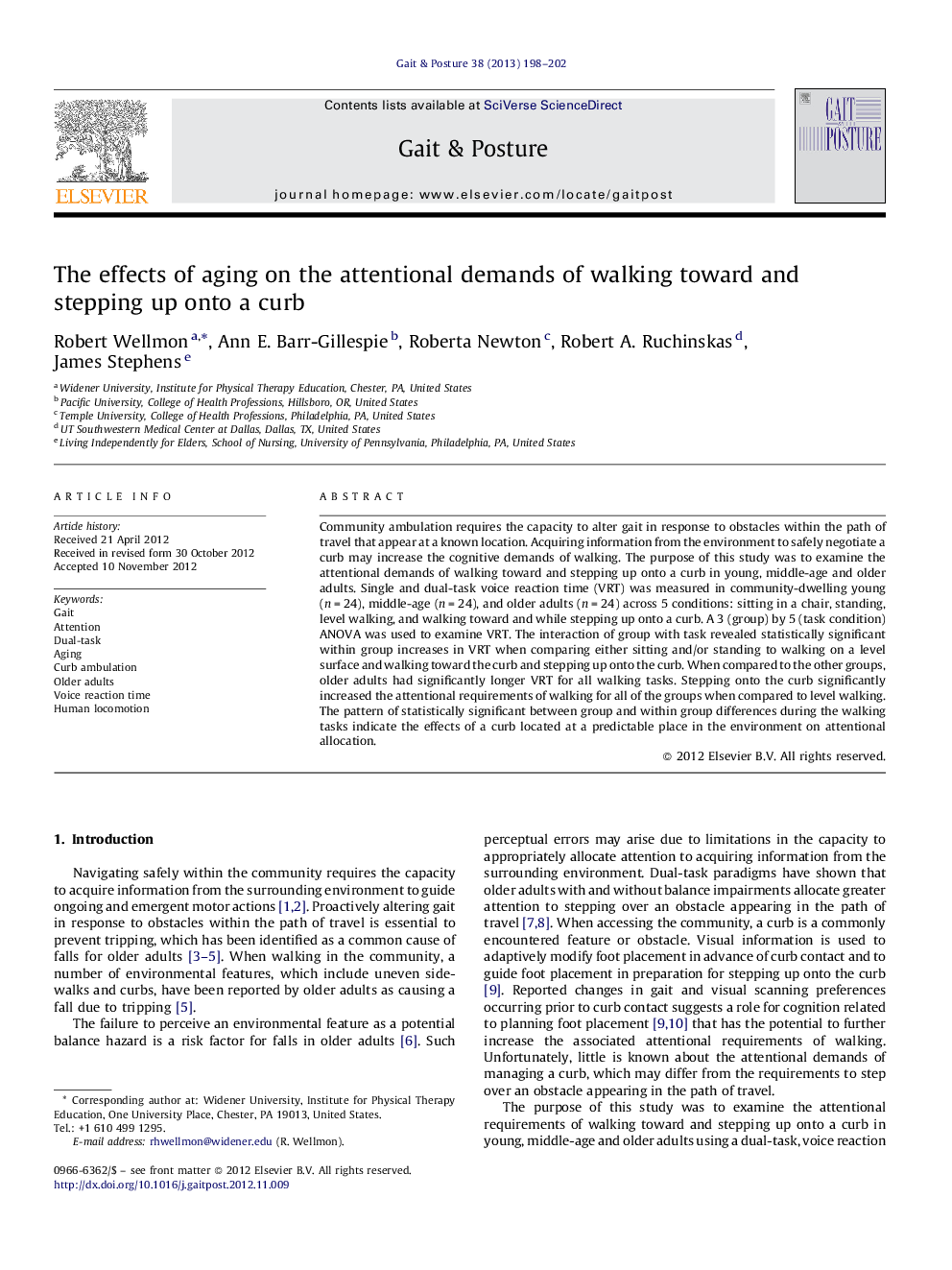| Article ID | Journal | Published Year | Pages | File Type |
|---|---|---|---|---|
| 6207317 | Gait & Posture | 2013 | 5 Pages |
Community ambulation requires the capacity to alter gait in response to obstacles within the path of travel that appear at a known location. Acquiring information from the environment to safely negotiate a curb may increase the cognitive demands of walking. The purpose of this study was to examine the attentional demands of walking toward and stepping up onto a curb in young, middle-age and older adults. Single and dual-task voice reaction time (VRT) was measured in community-dwelling young (n = 24), middle-age (n = 24), and older adults (n = 24) across 5 conditions: sitting in a chair, standing, level walking, and walking toward and while stepping up onto a curb. A 3 (group) by 5 (task condition) ANOVA was used to examine VRT. The interaction of group with task revealed statistically significant within group increases in VRT when comparing either sitting and/or standing to walking on a level surface and walking toward the curb and stepping up onto the curb. When compared to the other groups, older adults had significantly longer VRT for all walking tasks. Stepping onto the curb significantly increased the attentional requirements of walking for all of the groups when compared to level walking. The pattern of statistically significant between group and within group differences during the walking tasks indicate the effects of a curb located at a predictable place in the environment on attentional allocation.
⺠A dual-task voice reaction time (VRT) paradigm was used to examine curb ascent. ⺠The sample included community dwelling young, middle-age and older adults. ⺠When compared to level walking, VRT increased significantly for all three groups. ⺠In general, older adults had significantly longer VRTs when walking. ⺠A curb in the path of travel increases the attentional requirements of walking.
